Cheese-making: Automating an ancient art for safety and efficiency
By Andrew Zaske on June 30, 2020
First, three facts about cheese*:
- The natural yellow color of butter comes mainly from the beta-carotene found in the grass cows eat
- It takes 10 pounds of milk to make one pound of cheese
- About 300 varieties of cheese are sold in the United States
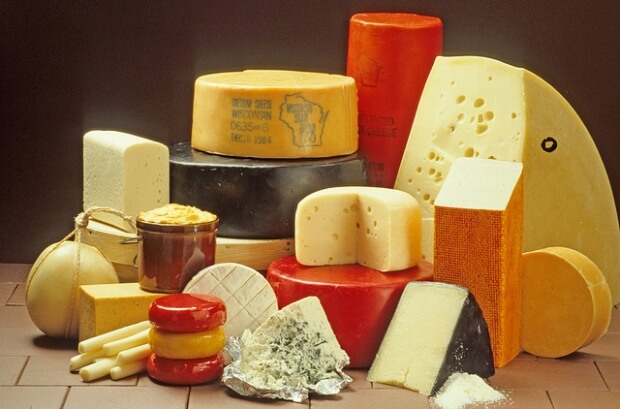
Those 300 varieties range from string cheese to cottage cheese, brie versus camembert, gouda and asiago. The cheese-making process is equally as diverse; each step along the way usually requires some type of controlled motion. These days, automated motion control—and especially replacing traditional fluid power with newer electric linear motion equipment—brings increased safety, quality and productivity to this ancient art.
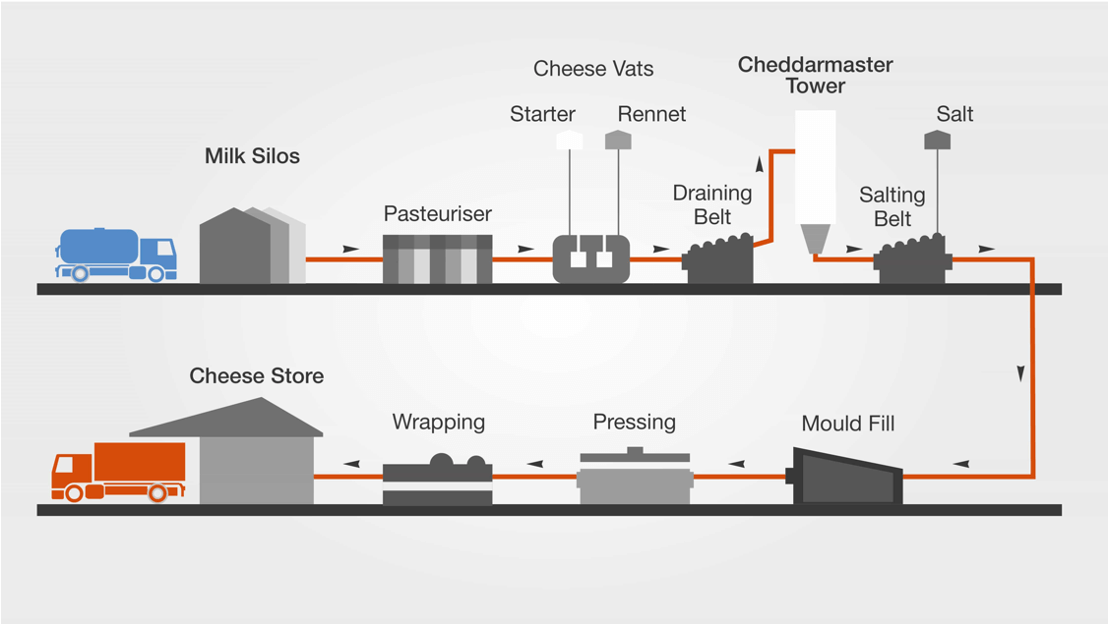
Like all food processing equipment, the automation components of cheese processing must be kept clean to prevent bacterial growth. The clean-in-place process for cheese-making varies dramatically, using hot temperatures, wide pH ranges, different cleaning chemicals, etc. So the food contact equipment must be able to withstand a harsh environment and frequent high-pressure washdown.
Second, three facts that make electric actuators safe for cheese processing:
1. Corrosion-resistant materials—Stainless steel (mainly 304 and 316) should be used for linear actuator bodies, motor housings and fasteners to stand up to washdown conditions. Food-grade epoxy coatings can work in some instances, but will present challenges for maintenance and product longevity down the road. Seals and gaskets must resist corrosion as well and are often of Viton® or Ultra High Molecular Weight (UHMW) polyethylene. Food processing applications will require an IP67 or even IP69K ingress protection rating (see chart).
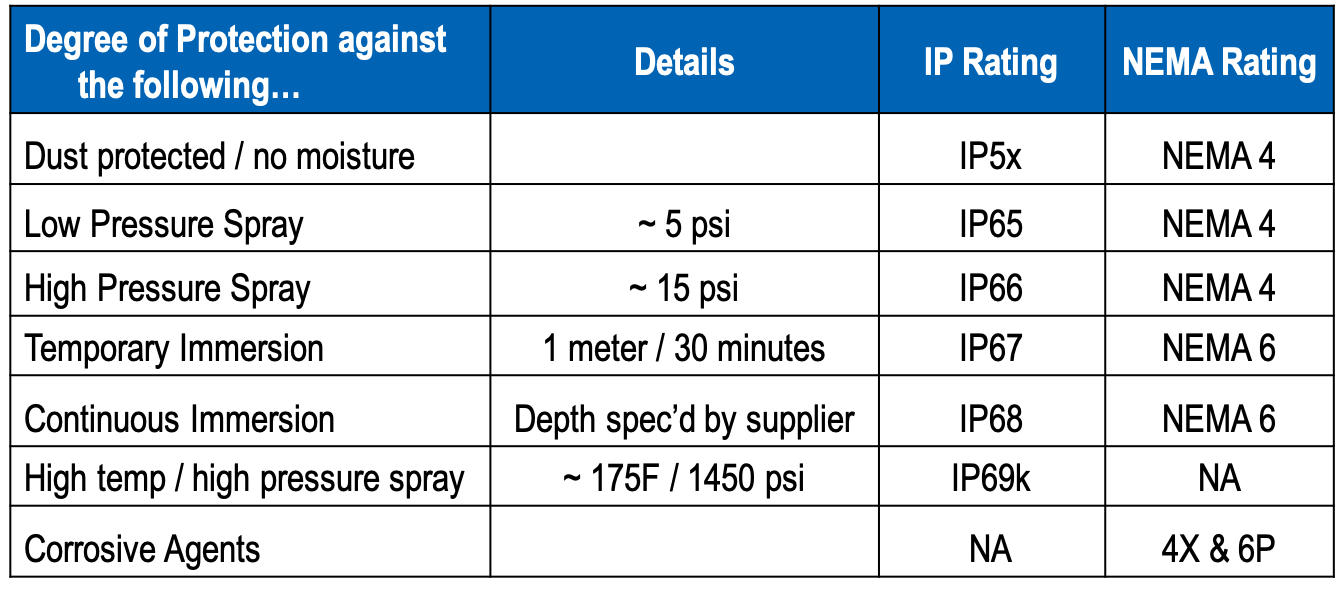
2. Moisture-shedding design—A rounded body design eliminates crevices where moisture, food particles and microorganisms can collect. This means that all transition zones of the body should have curved and open designs. A rounded design and smooth, water-shedding surface treatment minimize the chance that contamination will linger on the actuator after cleaning.
3. Protection for essential parts—Guarding critical components, like the motor and power screw, from the damaging effects of moisture and cleaners ensures the actuator’s long service life. This means you must use the right sealing materials and install them in a manner that will withstand the rigorous cleaning protocols in a cheese plant.
For a thorough review of all specifying factors to consider, read our white paper, Evaluating actuators in food and beverage processing applications.
Manufacturers who want to automate their cheese processes have as many different goals as there are cheeses. Some want better accuracy, some want to improve safety and cleanliness by replacing pneumatic or hydraulic processing with electric automation, others want to speed up the process without sacrificing quality. All of them want a solution designed to meet their needs.
Then there is the fact that some cheeses are easier to process than others. Soft cheese has a tendency to mushroom—i.e., squish out onto processing equipment. Hard cheese is tough to cut, requiring some pretty high forces. Add to that the safety concerns and food regulations and now cheese-making presents new challenges requiring any number of solutions.
Here are three ways actuators bring automation to the art of cheese-making:
Brine tank: Withstand high-pressure washdown in caustic environment
Application: Move cheese to four positions in a brine tank.
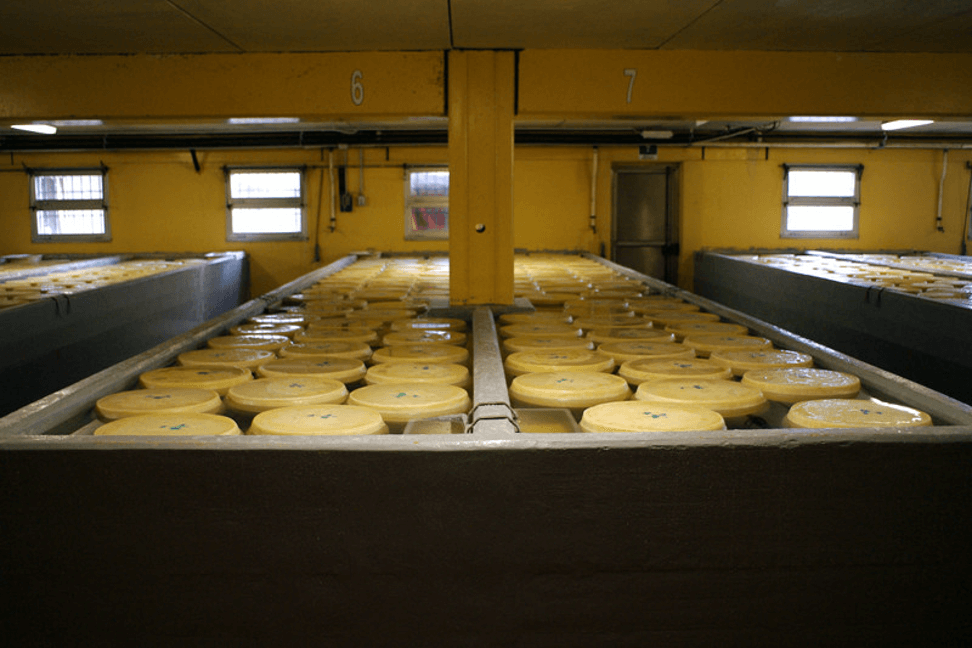 Challenge: Replace air cylinder operation with cleaner and safer electric actuator in an extremely corrosive environment. Brine mixture is 25 to 30 percent saline water. This eliminates an unclean air source from being near the product and creates very smooth and repeatable motion every time.
Challenge: Replace air cylinder operation with cleaner and safer electric actuator in an extremely corrosive environment. Brine mixture is 25 to 30 percent saline water. This eliminates an unclean air source from being near the product and creates very smooth and repeatable motion every time.
Solution: Four easy-to-program electric actuators rated for IP69k high-pressure washdown (ERD) move cheese molds to four different positions in a brine tank, which increases safety and efficiency.
Cheese cubing: Replace pneumatic cylinders with high-force electric actuators
Application: Cut large cheese blocks into uniform cubes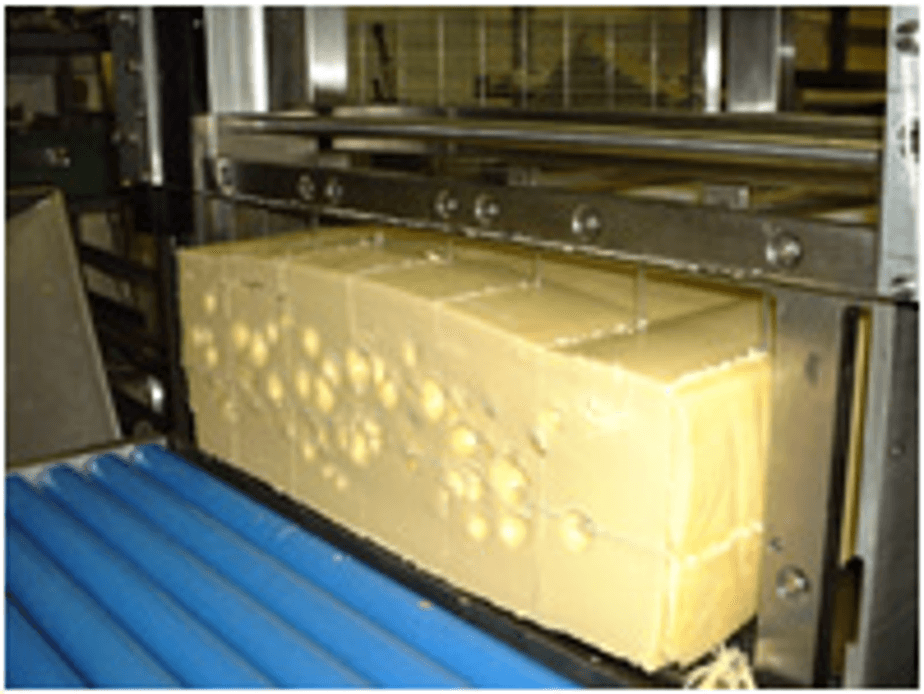
Challenge: A custom machine builder required a machine with no hydraulic or pneumatic control to cut large blocks of soft cheese vertically and horizontally. Soft cheese is hard to cut because it tends to “mushroom” and adhere to equipment. Cutting hard cheese into cubes requires high force, speed and accuracy and durable, long-last equipment.
Solution: Electric actuators (RSA) with stainless steel rod and rod end provide horizontal and vertical cuts at the the force required to push cheese through a harp, IP67 rating for light washdown and to meet the requirements, this application required a high-force ball screw and nut for extra force and long life. The result was improved accuracy, machine speed and uniform cubes.
Tank lid: Critical motion control for safety and cleanliness
Application: Mix cheese, yogurt and dairy products in a large tank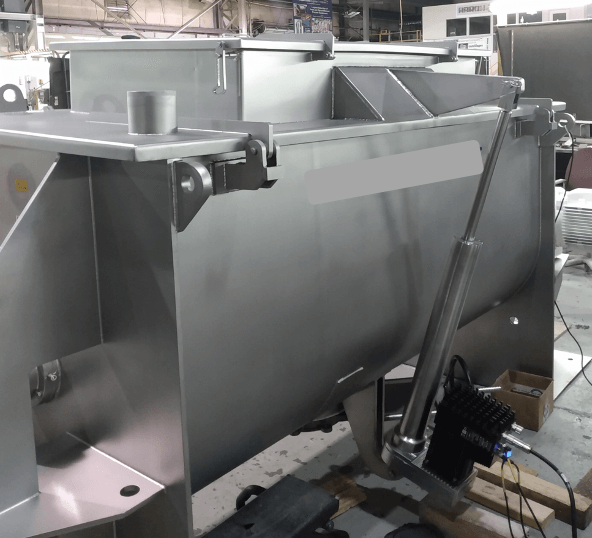
Challenge: Replace manual lift/cam arm with electric motion control for improved safety and reduced contamination risk. The tank lid’s overhung load created an extended center of gravity and high moment-load condition. The manufacturer required an “industrial grade,” non-fluid power, all-stainless steel solution, both to avoid the risk of air or oil contamination and to meet safety requirements.
Solution: An all-in-one solution (actuator, motor, brake, drive and controller) creates synchronized control with left-hand/right-hand actuators, eliminates the manual operation and withstands the high center of gravity. A brake on the servo motor holds the tank lid in position in the event of power loss. High quality, long-lasting materials ensure long life and reliable performance.
These are just a few of the myriad ways that automated motion control with electric actuators enhances cheese processing specifically and diary-foods processing and production in general. For more information, please view our white papers and other information:
Evaluating actuators for washdown in food and beverage applications
IP ratings and the manufacturing environment: How to apply linear actuators for quality, safety and long service life
For more food and beverage applications, see our Industries page.
https://www.tolomatic.com/industries/food-beverage/success-stories
For more about food processing solutions, read our blog on meat processing:
Find out more about our complete line of electric actuators.
*Thanks to the Wisconsin Cheeseman for this information
Main image courtesy Wisconsin Department of Natural Resources

 Ask an Engineer
Ask an Engineer